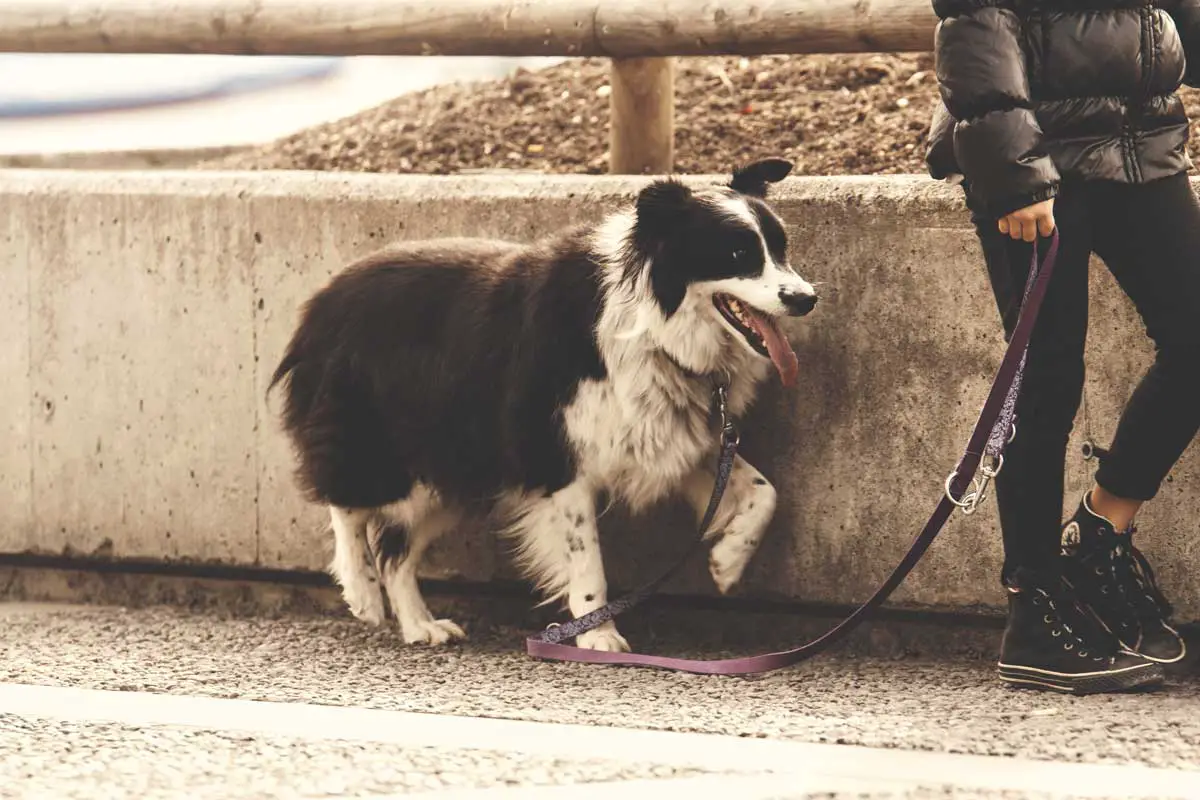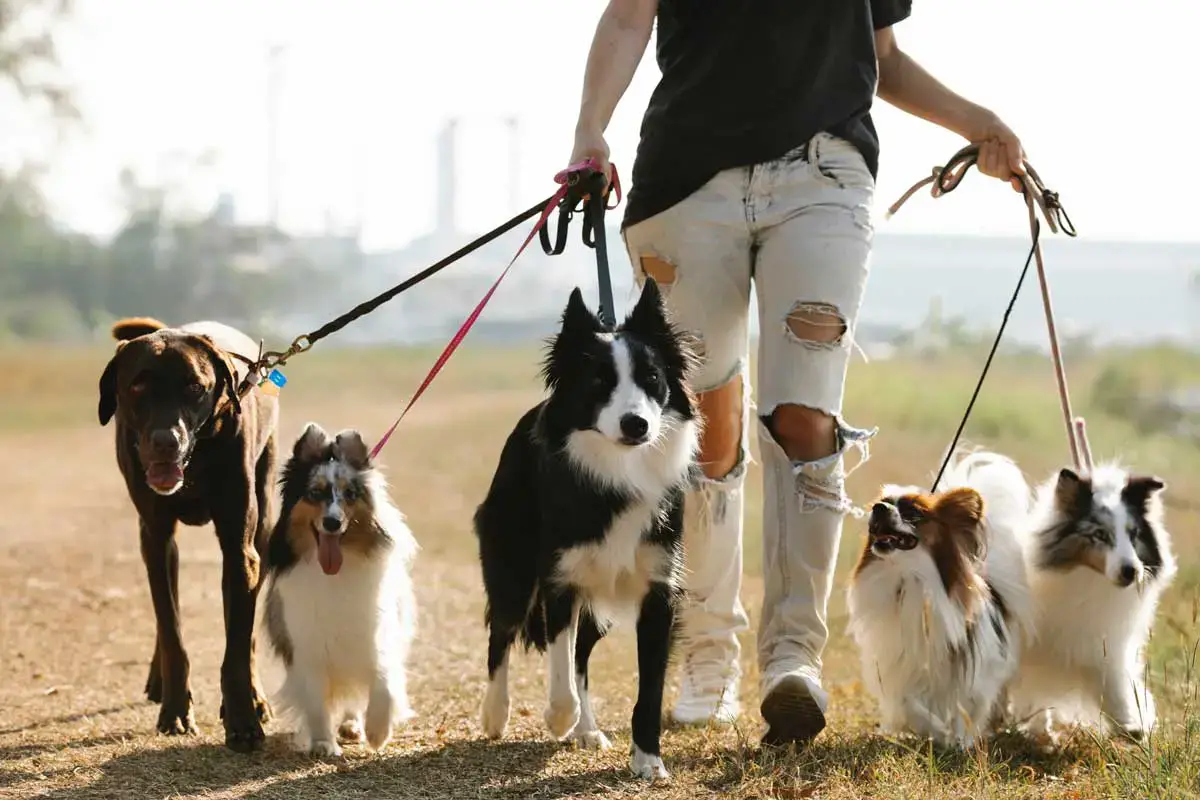Similar to humans, dogs require regular physical activity to thrive. Exercise is crucial for dogs as it helps them maintain muscle strength and achieve a healthy weight suitable for their age and breed. However, taking your dog for a walk goes beyond mere physical exertion. It offers valuable mental stimulation, fostering confidence and warding off potential behavioral problems such as anxiety and aggression.
Related:
10 Common Dog Behaviors: Causes and Solutions
How To Understand Dog Body Language

1. Benefits Of Dog Walking
Physical Health
Regular dog walking plays a vital role in maintaining your dog’s physical health. It helps them burn excess energy, maintain a healthy weight, and develop strong muscles and joints. By engaging in physical activity, dogs are less likely to become obese, reducing the risk of various health issues such as heart disease, diabetes, and arthritis.
Mental Stimulation
Dog walks offer more than just physical exercise; they provide mental stimulation as well. Exploring new environments, encountering different scents, and interacting with their surroundings engage a dog’s senses and stimulate their cognitive abilities. This mental stimulation helps prevent boredom, improves their focus, and reduces the likelihood of destructive behaviors at home.
Socialization Opportunities
Dog walks also serve as excellent opportunities for socialization. Regular interactions with other dogs, humans, and various stimuli in the environment help dogs develop proper social skills and reduce the chances of developing fear or aggression toward unfamiliar situations. Additionally, meeting new people and dogs during walks can enhance your dog’s overall confidence and friendliness.

2. How Long Should I Walk my dog?
Puppies
When it comes to puppies, their exercise needs are unique and depend on factors such as their age, breed, and overall health. It’s crucial to provide them with appropriate exercise to support their growth and development without overexerting their still-developing bodies.
As a general guideline, start with short walks of about 5-10 minutes, multiple times a day. As they grow older and gain more stamina, gradually increase the duration of their walks. Aim for a total of at least 30 minutes to an hour of exercise per day. However, be attentive to your puppy’s behavior and adjust the duration or intensity of the walks if they seem tired or restless.
Adult Dogs
Adult dogs generally require more exercise compared to puppies, but the specific duration depends on factors such as breed, size, and energy level.
On average, most adult dogs benefit from a daily walk of 30 minutes to an hour, divided into two or more sessions. This allows them to burn off excess energy, maintain muscle tone, and prevent weight gain.
However, it’s important to assess your individual dog’s needs. Some breeds, like Border Collies or Huskies, are high-energy and may require more vigorous exercise such as jogging or playing fetch to meet their exercise requirements adequately.
On the other hand, lower-energy breeds may be content with shorter walks, but it’s important to ensure they still receive mental stimulation and regular exercise to prevent boredom.
Senior Dogs
As dogs enter their senior years, their exercise needs may decrease due to reduced stamina and potential age-related health concerns. However, it’s still essential to provide them with regular exercise to keep their muscles strong and maintain their overall well-being. Adjust the duration and intensity of the walks based on your senior dog’s comfort level and any existing health issues they may have.
Generally, shorter walks of about 15-30 minutes are suitable, but be observant of your dog’s behavior and physical limitations. If your senior dog shows signs of fatigue or discomfort during walks, consider breaking the exercise into multiple shorter walks throughout the day. Additionally, senior dogs may benefit from exercises that are gentle on their joints, such as swimming or slow-paced walks on softer surfaces.
Remember, the duration mentioned in each age category is a general guideline, and it’s crucial to evaluate your dog’s individual needs and adjust accordingly. Factors such as breed, size, health condition, and energy level all play a role in determining the appropriate length of walks. It’s always beneficial to consult with your veterinarian for personalized advice based on your dog’s specific requirements.

3. How Long Should I Walk my dog?
Use Proper Equipment
To ensure a safe and enjoyable walking experience, it’s important to use the right equipment for your dog. Invest in a well-fitted collar or harness that suits your dog’s size and breed. A sturdy leash with a comfortable handle is also essential. Consider factors such as your dog’s behavior during walks, their tendency to pull, and any specific needs they may have. For example, dogs with respiratory issues may benefit from a harness instead of a collar to alleviate strain on their neck.
What You Need:
- Collar or harness
- Leash
- Small treats
- Poop bags
- Appropriate clothing (for you and the dog if necessary)
Practice Leash Etiquette
Proper leash etiquette is essential for a pleasant walking experience for both you and your dog. Keep your dog on a leash unless you’re in a designated off-leash area. Ensure the leash is of an appropriate length to give your dog freedom to move, yet maintain control. Avoid excessive pulling on the leash by using gentle corrections and positive reinforcement. Additionally, be mindful of other pedestrians, cyclists, or dogs you may encounter during the walk. Maintain a safe distance and be considerate of others’ space.
Start with Basic Training
Before embarking on walks, it’s crucial to establish basic training commands with your dog. Teach them commands like “sit,” “stay,” and “heel” to ensure control and prevent any unwanted behaviors during walks. Positive reinforcement techniques, such as treats or verbal praise, are effective in encouraging good behavior. Practice these commands in a controlled environment before applying them during walks.
Maintain a Consistent Schedule
Dogs thrive on routine, so it’s beneficial to establish a consistent walking schedule. Set aside specific times each day for walks and stick to them as closely as possible. Regular walks at the same time help your dog anticipate and look forward to their exercise routine. Consistency also helps in regulating their bathroom habits and energy levels. However, be flexible and adaptable to accommodate any changes or unforeseen circumstances that may arise.
Choose Safe Walking Areas
Selecting safe walking areas is crucial to ensure the well-being of your dog. Avoid high-traffic areas and busy roads where there’s a higher risk of accidents. Instead, opt for parks, nature trails, or designated dog-friendly areas where your dog can explore safely. Be mindful of your dog’s behavior and keep them away from potentially harmful substances or objects they may encounter during the walk.
By providing your dog with regular exercise appropriate for their age, you can ensure they remain physically fit and mentally stimulated, and maintain a healthy lifestyle throughout their life stages.











